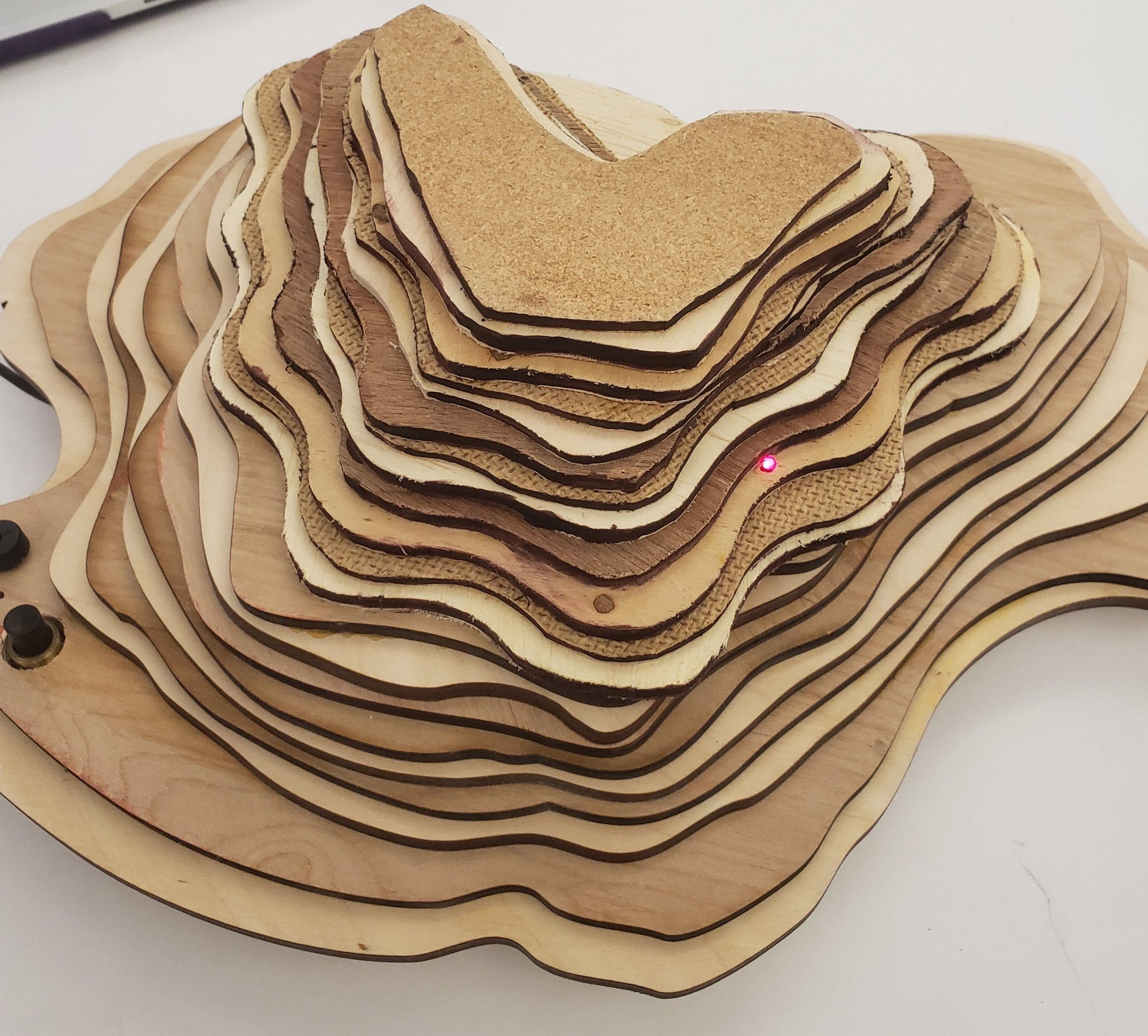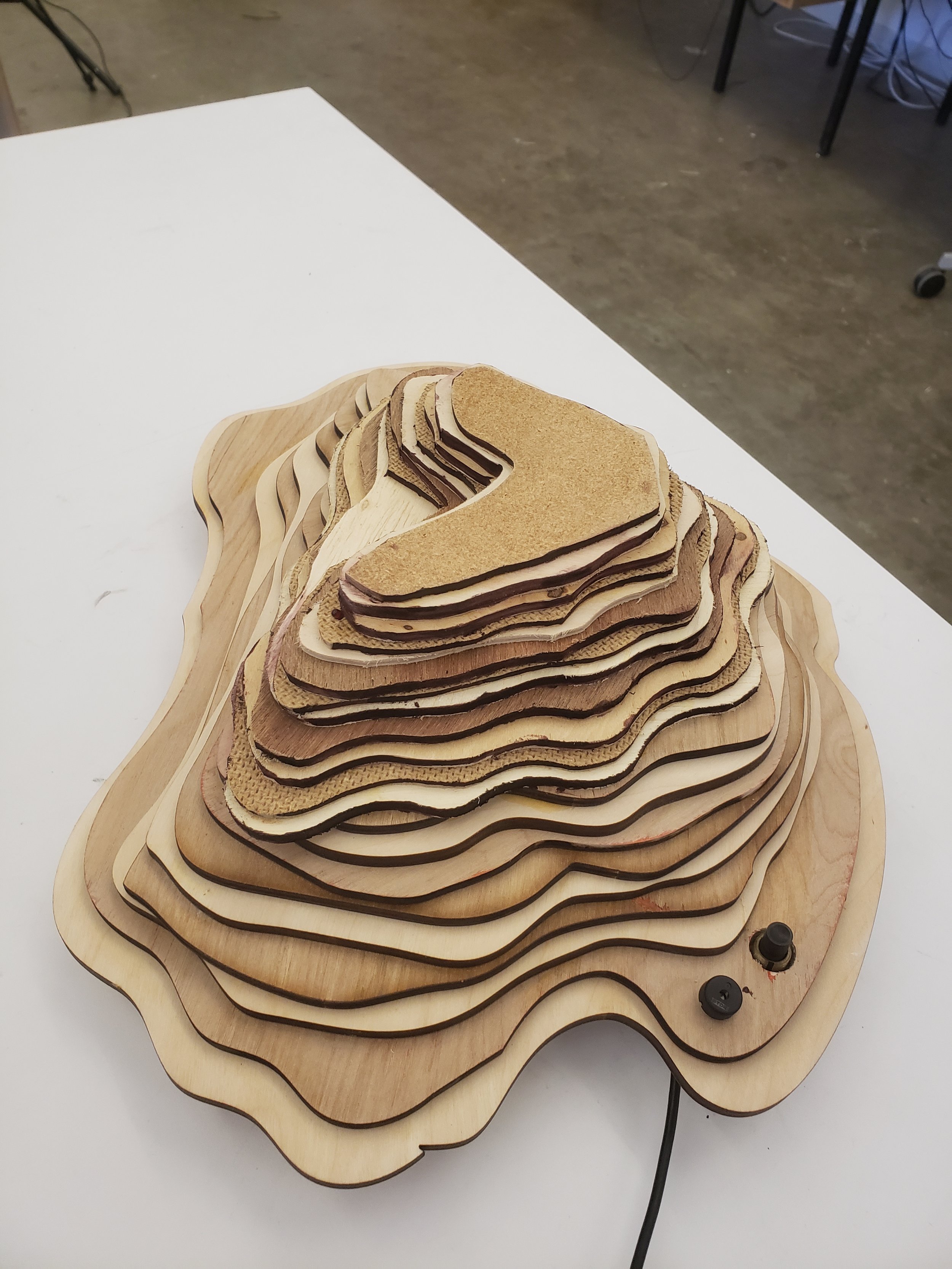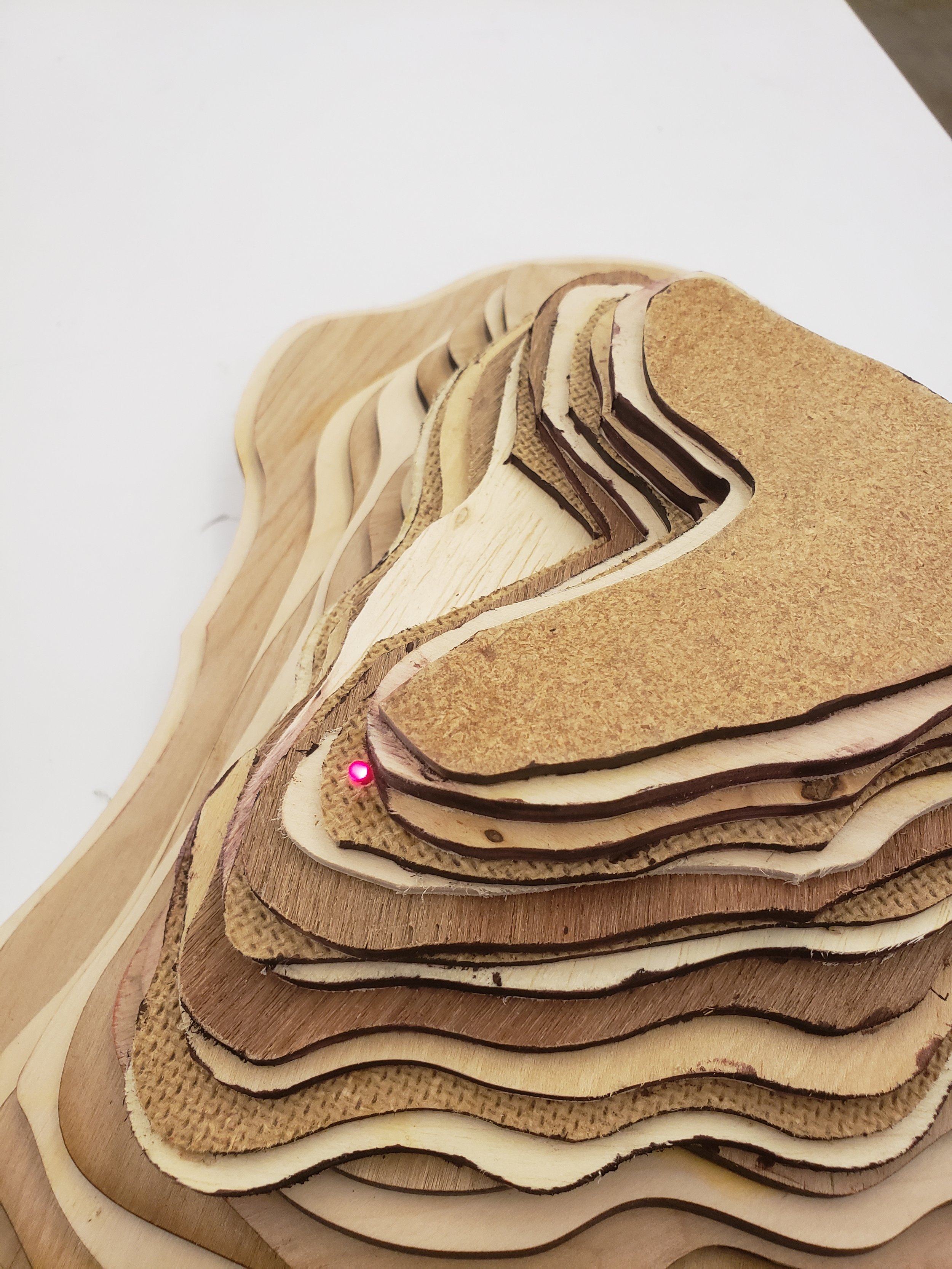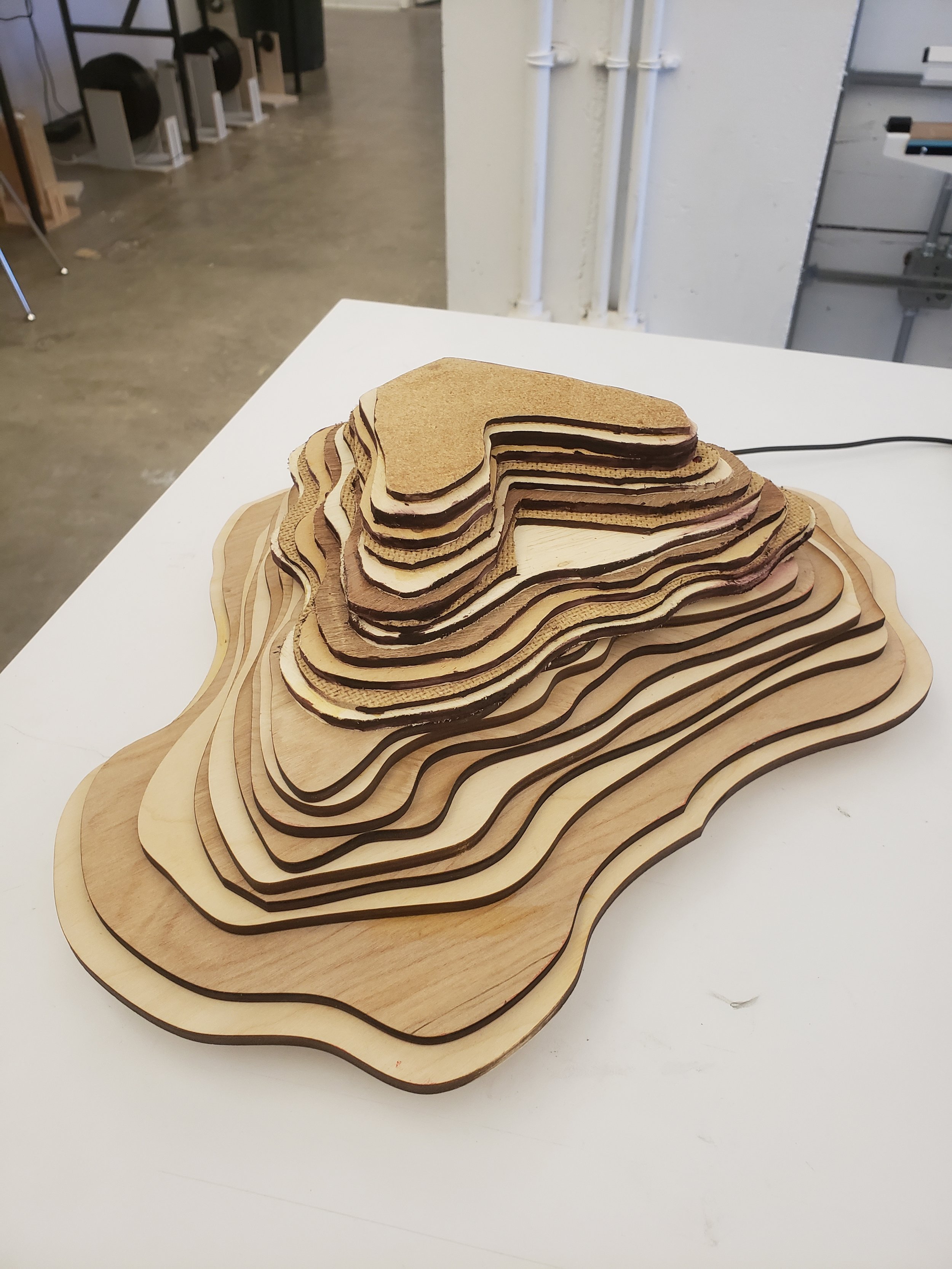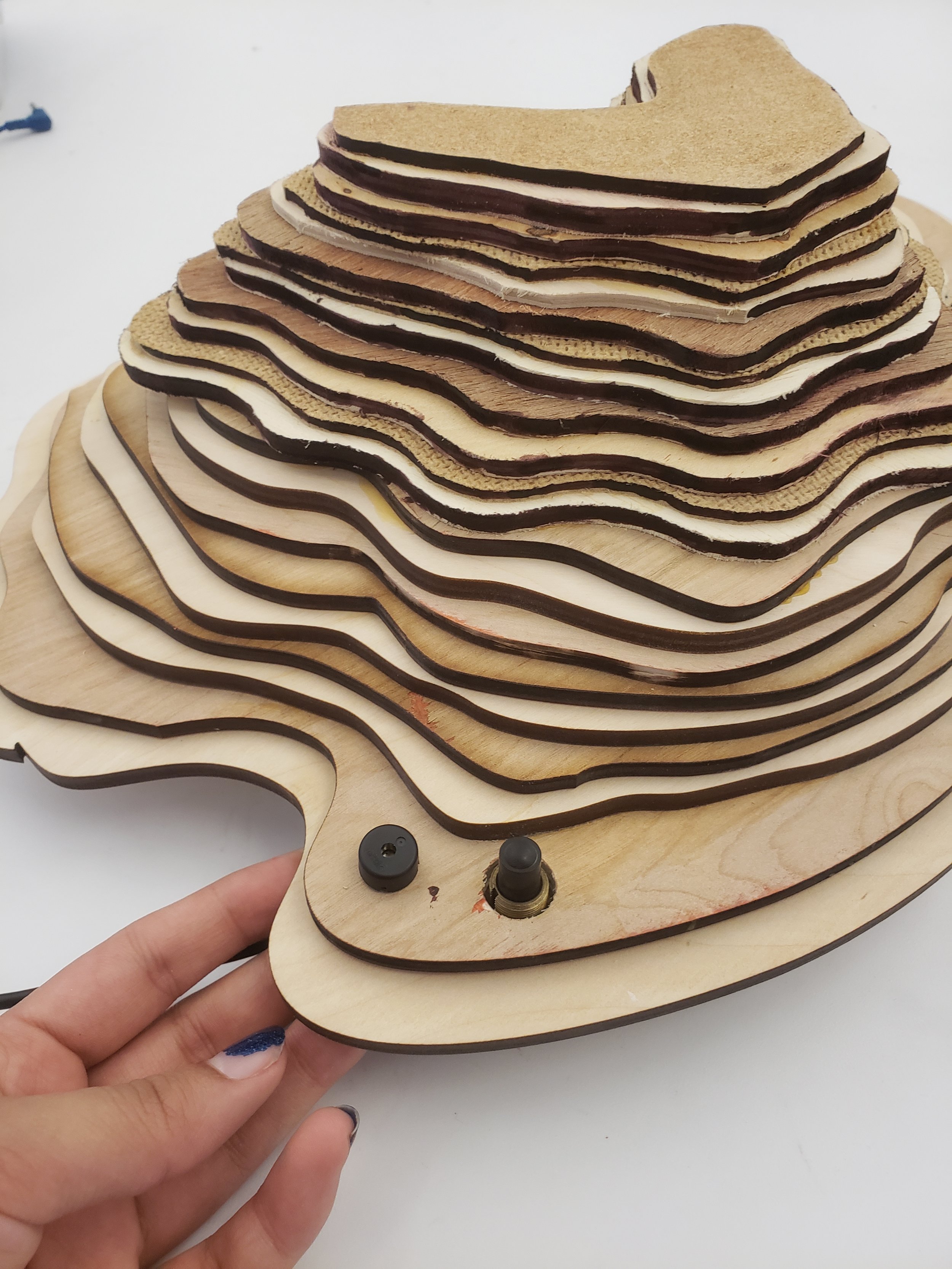
strata
While driving, I was struck by those 'fake trees' used for utility poles. They mimic the look of real trees, which is a fascinating example of how we try to integrate technology into our surroundings in a more visually appealing way. I played with that idea of artificially realistic objects and created a tree stump with topographical lines. I equipped it with sensors and a basic communication system – a hidden beeper and a couple of lights. It would be like a secret network disguised as part of the landscape. It's a great example of how we can blend technology with the natural world, creating solutions that are both functional and aesthetically pleasing.
Initial sketches started resembling tree rings and topographic maps. I wanted the form to feel a bit less predictive and wanted there to be tension between each strata. While assembling the laser cut layers, I rotated each layer slightly to play with the initially sequential shapes.
This circuit was built using an Arduino microcontroller on a breadboard. I connected various components, including a piezo buzzer, resistors, and a potentiometer, to the Arduino. I implemented an Arduino code to define the notes and their durations, control the speaker, and blink two LEDs. The code utilizes a loop to iterate through the notes, playing each note with a gradually decreasing duration, creating a speeding-up effect.
